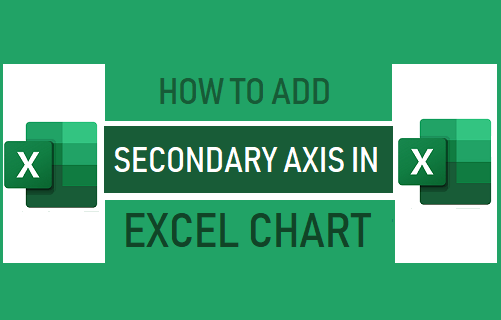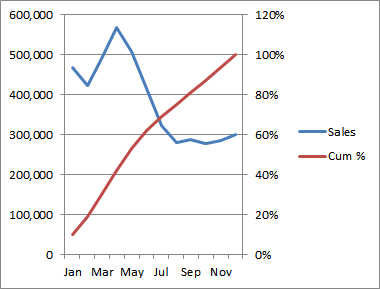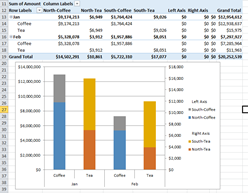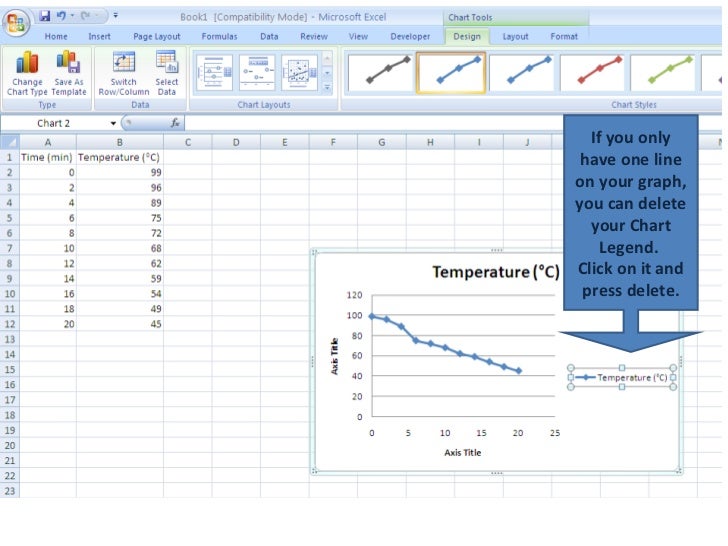
- #ADD A SECONDARY AXIS IN EXCEL FOR MAC HOW TO#
- #ADD A SECONDARY AXIS IN EXCEL FOR MAC MANUAL#
- #ADD A SECONDARY AXIS IN EXCEL FOR MAC DOWNLOAD#
Use the chart customization buttons that appear in the top right corner of your Excel graph when you click on it.Įven more customization options can be found on the Format Chart pane that appears on the right of your worksheet as soon as you click More options… in the chart's context menu or on the Chart Tools tabs on the ribbon.

#ADD A SECONDARY AXIS IN EXCEL FOR MAC HOW TO#
If you've had a chance to read our previous tutorial on how to create a graph in Excel, you already know that you can access the main chart features in three ways: And further on in this tutorial, you will learn some quick ways to add and modify all essential elements of Excel charts.

Microsoft has really made a big effort to simplify the process and place the customization options within easy reach. In modern versions of Excel, customizing charts is easy and fun. In this example, doing so will add “featured on ” to our line.After you have created a chart in Excel, what's the first thing you usually want to do with it? Make the graph look exactly the way you've pictured it in your mind! In addition, you can change the scale of the axis to expand or contract the vertical line as you wish.Īnd last but not least, you can access the “Format Data Series” dialog box for the single vertical line data point (as was discussed above) and add the y-axis column label to your line by selecting the “Data Labels” tab and checking “Series name” under the Data Labels section.

Choose the “Patterns” tab and you can choose “None” for all the line and tick mark labels to hide the axis on the chart. In addition, you can hide the secondary axis by clicking on it once to select it, then right clicking the secondary axis and select “Format Axis…”. So to improve the appearance of your chart, you can format the vertical bar by clicking on it once to select it, then right clicking on the bar and selecting “Format Error Bars…” and click the “Patterns” tab to change the look of the error bar as you wish. You’re basically done at this point and although this technique for adding a vertical line is useful, it’s not easy on the eyes. It doesn’t matter what you name your y-axis data ( you will see why “featured on ” is being used in a moment) or what value you use as long as it is in the neighborhood of the data that has been plotted. For this example, the date when was featured on is being used as the vertical line data. Be sure to follow the same data structure that you used for your original data. In a separate area on your worksheet, add the info for the vertical line data. Step 2: Add the vertical line data to your chart… Be sure to follow all the Chart Wizard steps and choose the “as object in” option to place the chart in your worksheet ( we can change the location of the chart later).
#ADD A SECONDARY AXIS IN EXCEL FOR MAC DOWNLOAD#
If you want to follow the example in this tutorial, you can download the Excel spreadsheet * HERE*. Using the Chart Wizard, create an XY (Scatter) chart with time on the x-axis and your numeric data on the y-axis.

Step 1: Create an XY (Scatter) chart…įor this example, feed subscribers for the month of May is being used. Thankfully, there’s a “hack” that can eliminate the hassle of drawing vertical lines while allowing you to instantly change their position with a few mouse clicks.
#ADD A SECONDARY AXIS IN EXCEL FOR MAC MANUAL#
The issue is that these lines aren’t bound to the x-axis, so any change to the chart is usually accompanied by manual line repositioning. Normally, one turns to the line tool in Excel to manually draw vertical lines on a chart.


 0 kommentar(er)
0 kommentar(er)
